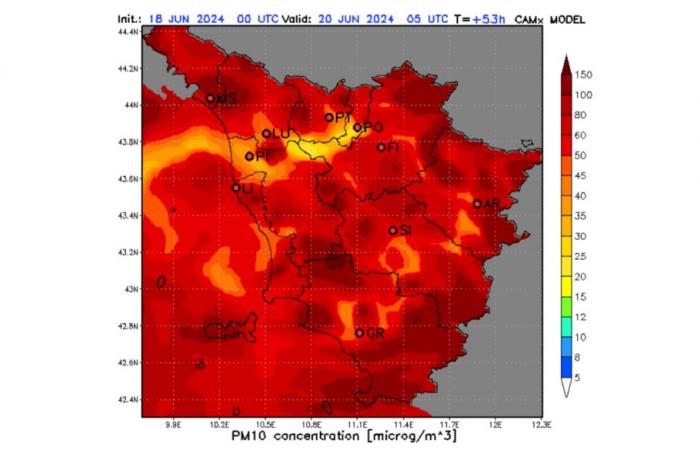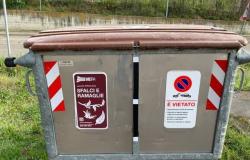FLORENCE – “Between Wednesday and Friday, very hot air masses of desert origin will reach Italy driven by intense southern winds at medium tropospheric altitudes (between 3,000 and 5,000 metres)”.
It is the beginning of the explanation with which the LAMMA Consortium presents the situation we will experience in Tuscany between tomorrow, Wednesday 19th, and Friday 21st June.
“This flow – continues the LAMMA – triggered by the presence of a deep depression vortex on the Iberian peninsula, will transport large quantities of Saharan dust towards Italy and central-eastern Europe, giving rise to an intrusion of anomalous proportions”.
“The extension of the phenomenon – they underline – and the dust concentrations predicted by the dispersion models are, in fact, to be considered unusual”.
“Between Friday and Saturday – they add – the vortex over Spain will move to France and then move to Eastern Europe; the transit of the disturbance will favor the rotation of the winds in the western quadrants, putting an end to the intrusion of desert dust on Italy and Tuscany”.
“We must talk about “dust” – explains the LAMMA – and not about sand. The latter is in fact too heavy and coarse (between approximately 0.1 mm and 2 mm) to be transported up to medium tropospheric altitudes by vertical motions and winds”.
“The smallest particles, on the contrary – they underline – if inserted into a sufficiently intense flow, manage to overcome the force of gravity and can travel thousands of kilometers before settling”.
LAMMA also recalls that “Saharan dust is rich in micronutrients that are essential for both plants (phosphorus) and marine photosynthetic organisms (iron)”.
“The months in which there is the greatest frequency of Saharan intrusions on central-northern Italy and the Alpine region – they continue – are May, June and October”.
“The episode expected in the next few days will be very intense – they anticipate – as we can see from the maps and graphs below. Dust contributes to the increase in PM10 concentrations in the area.”
“Starting from the 18th – they quantify – most of the dust is concentrated between 2,000 and 3,000 metres; on the 19th the estimated amount of dust increases significantly and begins to reach lower altitudes.”
“The 20th represents the day of maximum intensity – they conclude – both at altitude and on the ground and starting from the 21st it begins to decrease, although the values are still quite high”.
Links indicated by LAMMA for further information
©ALL RIGHTS RESERVED





